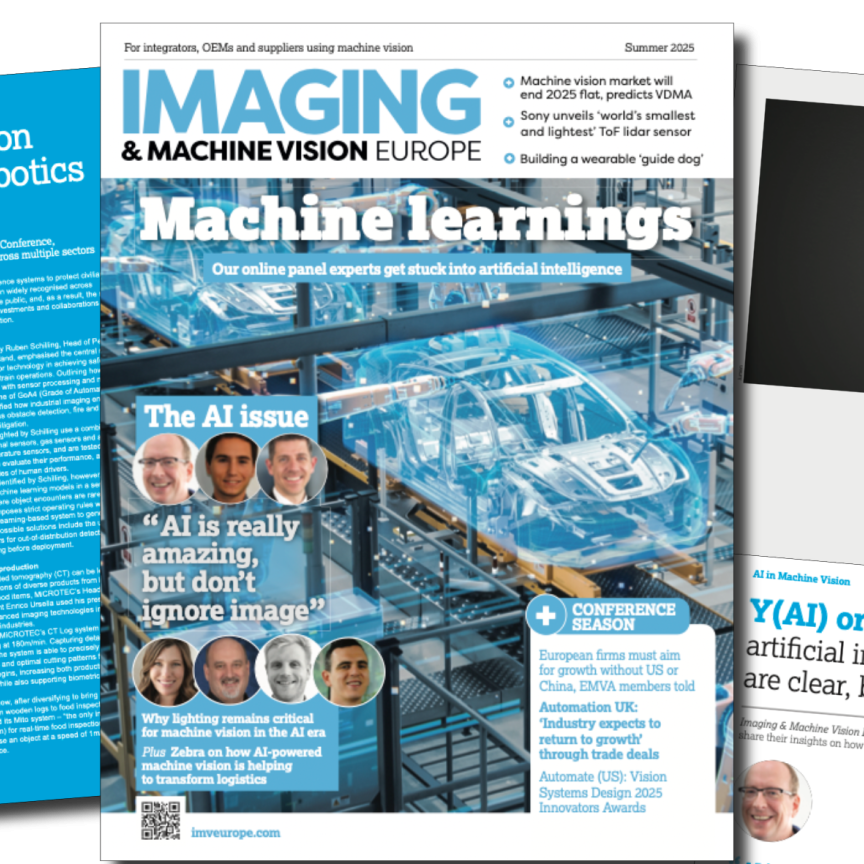How did you come to be part of the imaging/machine vision industry?
My first experience of machine vision was as a consultant writing image processing software. I was working with Mark Williamson, now of Stemmer Imaging UK. From there I worked on a wide range of machine vision projects from packaging to transport.
In 1999 I set up Gardasoft Vision, which was originally a systems integrator. We found that controlling the lights was never satisfactory. We had to build a plastic box with a knob and variable resistor and then we had to document it. It was a distraction and a hidden cost that we hadn’t allowed for in the quote. Eventually we produced a simple lighting controller to solve this problem for our own use. Over time, we realised that everyone else had the same problem and started marketing our lighting controllers, which eventually took over the business and we are now a 100 per cent product focused company.
We have found that Gardasoft’s engineering and systems integration background has helped us enormously. We understand the whole machine vision system from optics to software, which helps us to see how our products affect the whole system. Now we are engaging with image processing software packages with our Triniti technology; our knowledge of how these fit in with the whole system means we can provide relevant solutions.
My up-to-date view of the machine vision market comes from the lighting sector so I will answer these questions from that viewpoint.
How do you convince customers that they need machine vision?
While Gardasoft doesn’t get involved in customers’ decisions about whether to use machine vision, we do get involved when they are sourcing components and deciding on the technical solution. Every system requires good lighting, so our job is to advise customers on when and how a lighting controller can help them.
Lighting controllers can help them produce more reliable and repeatable machine vision systems, give faster product throughput, and can reduce maintenance costs and machine downtime. These are very compelling reasons which every machine vision engineer should consider.
What role does Europe have in the development of machine vision?
I see Europe as the test bed for innovation as the market is always looking to improve performance. While there are manufacturers advancing machine vision technology around the world, Europe is the early adopter looking for techniques and products which can enable better machine vision systems. The market is longer established in machine vision and has more experience in justifying the return on investment, will spend more to get a better result, and so is more receptive to leading-edge technology.
What do you see as the major growth sectors?
A lot of the machine vision world is looking at Intelligent Traffic Systems (ITS) as a good technology fit for new sales. Growth has been slower than I would expect, but there are good opportunities for machine vision components and software techniques in this market. For individuals, machine vision is a small market and there are career opportunities in ITS as skills are easily transferrable.
What are the most important technological challenges facing the industry?
Machine vision components will become more intelligent and adaptable. For example, the end of life for lighting is specified when it reaches 70 per cent of its original brightness. How many systems can cope with a 30 per cent reduction in brightness? A maintenance engineer will normally need to regularly adjust lighting brightness or software thresholds to compensate. In future, lighting will hold its lifetime usage information, which the controller will use to maintain consistent brightness over many years.
Faster line scan cameras are providing new opportunities; engineers are using the faster line rates to reduce costs or increase capability. For example, a single line scan camera can now acquire images with two different lighting schemes without slowing down throughput. The lights are switched for each line, so alternately brightfield and backlit, for example, or different wavelengths are used.
It’s outside my field, but liquid lenses look like they will enable more adaptable systems and create a range of new techniques and inspections.
What do you see as being the most significant commercial change in the industry for the future?
The machine vision market grows year on year; engineers with the knowledge of machine vision solutions appear to be in short supply. The effect of this is that systems need to be easier and faster to put together. This makes machine vision engineers more efficient, but also allows engineers with skills in other areas to use it. For example, engineers in general factory automation might not have specific machine vision knowledge but they want automated inspection in their systems, and enabling these non-experts access to this technology will increase its use.
So increasing the capabilities of smart cameras, making components more plug-and-play, providing easy integration and making advanced techniques easier to use will be a necessary trend in the coming years. It’s no coincidence that these are the issues that Gardasoft’s Triniti technology addresses.


